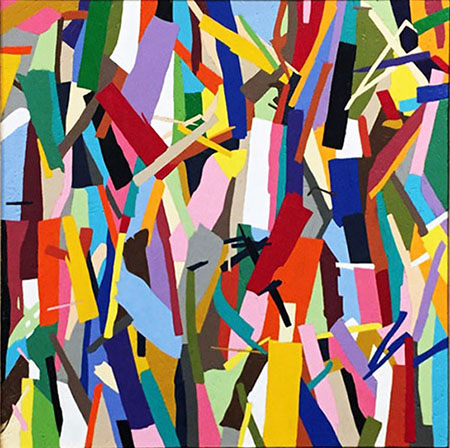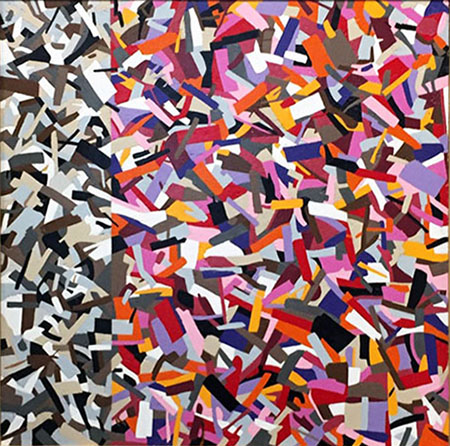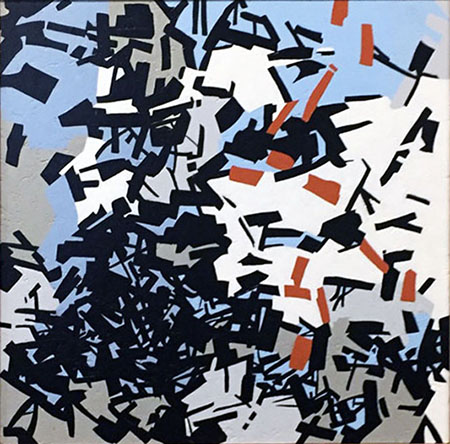Joelle Ford

Joelle Ford (American, b. 1943)
Carnival, 2007-08
Acrylic on pressed plywood
24 x 24 in

Joelle Ford (American, b. 1943)
Red, 2006
Acrylic on pressed plywood
24 x 24 in

Joelle Ford (American, b. 1943)
Approaching Storm, 2007-08
Acrylic on pressed plywood
24 x 24 in
Drawing on a “waste not, want not” ethos instilled by her parents, who endured the Great Depression, Joelle Ford saves and imaginatively repurposes materials from everyday life. She invites viewers to look afresh at seemingly mundane, artless objects, including bottlecaps, golf tees, dustpans, and — in the case of Red, Approaching Storm, and Carnival — mass-produced plywood floor squares, which serve as the supports for her abstract compositions. In these works, irregular patches of flat color dominate the painted surface, their relative size, orientation, and distribution yielding different visual effects. A flurry of small, densely packed shapes causes Red practically to vibrate with energy. The larger, more uniformly vertical components of Carnival lend it a certain stillness despite its vibrant palette. Blocks of black and a smattering of brown seem to radiate explosively outward from the bottom left of Approaching Storm, suggesting perhaps windswept debris gusting towards the viewer. For the artist, who says she has always loved the patterns of pressed plywood, this project grew in part out of necessity: a temporary move to a small apartment left Ford without many of her typical, scavenged art-making materials, prompting her to purchase these compact “canvases” at the hardware store.
Biography
Raised in eastern Texas and western Louisiana, Joelle Smith Ford studied art at two Louisiana colleges in the 1960s before accompanying her husband, Allen, to Arkansas and later Lawrence, where he taught in KU’s School of Business from 1976 to 2019. Following a 38-year gap in which she raised four daughters, Ford earned her BFA with honors from KU in 1999. Harnessing skills honed through decades of sewing clothes, refinishing furniture, and fixing up houses, Ford’s work consists primarily of large- and small-scale found-object assemblages. Ford’s castoff creations have been exhibited in venues throughout the South and Midwest, and her art has received recognition from the Kansas Arts Commission and Kansas City Artists Coalition.
— Melinda Narro, MA student in art history at the University of Kansas, April 2019